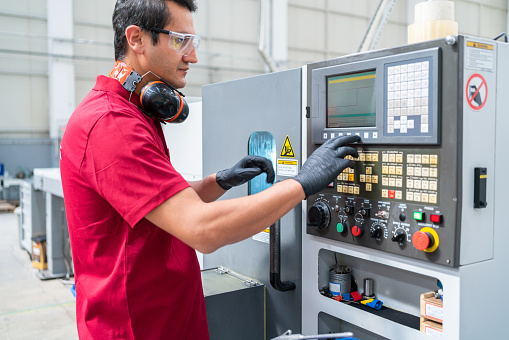Computer-aided design (CAD)
CNC components with computer-aided design (CAD) capabilities help design parts for the manufacturing industry. CAD software is used to create two- and three-dimensional designs and prepare technical specifications and documentation. This software allows designers to simulate products in a virtual environment without building a prototype. The software also creates a database of design data for use in manufacturing processes.
CNC components designed with CAD software can help with process planning, resulting in more accurate and consistent parts. These components can respond more to engineering changes and reduce production lead times. They can also lead to fewer calculation errors and improve cost-estimating procedures. CAD software also helps manufacturers introduce new manufacturing technology with ease.
Common CNC machining tools
Precision CNC Machining, tools are used to create complex parts from various materials. The choice of materials depends on the properties of the components being made. For example, hard materials like ceramic require a tool with high speed and high heat resistance. Softer materials, such as titanium, are more brittle, making machining them more difficult. For these reasons, the selection of CNC machining tools is significant.
CNC machining begins with CAD design, which speeds up the prototyping process. The CAD design software helps catch potential flaws in the design and risks associated with different materials. It allows for faster production. Furthermore, CNC machining instructions can be replaced or altered with ease, thus lowering per-unit costs of production. It also involves less manual labour, producing parts more efficiently.
Cost of CNC machining
The cost of CNC machining components depends on the material used and the number of parts to be made. For instance, it costs roughly $90 per unit to produce a block of stainless steel, compared to about $17 for a block of ABS plastic. Therefore, it is better to use plastic because it is cheaper than stainless steel and can provide sufficient strength. In addition, it gives you the best value for money.
One of the best ways to reduce the cost of CNC machining is to optimize the component’s design. However, this should be fine with the functionality of the product. You can do this by adding a radius to the internal vertical edges, increasing the thickness of the walls, and optimizing tapped holes. Another way to reduce the cost of CNC machining is by breaking complicated parts into smaller, simpler ones. You can also reduce the cost by choosing only the necessary surface finishes for the components.
Requirements for CNC machining
The requirements for CNC machining of components vary by component type. Typical requirements include large fillets at internal vertical corners, a maximum depth of 4 times the width of the cavity, and alignment of the main design features with one of six principal directions. These requirements are outlined in the technical drawings, along with tolerances, threads, and surface finish specifications.
CNC machines are highly accurate but may still leave a slight variance between duplicate parts. You should specify tolerances only in the areas where the details will contact each other. The table below lists the standard tolerances for different types of components.
Typical applications for CNC machining
Many industries use CNC machines to produce precision parts with high quality quickly. Typical industries using CNC machines include aerospace, medical, and electronics. CNC machines can manufacture many different kinds of components, including metal parts. The type of tool used depends on the sort of work being done. For example, a water jet cutter is ideal for cutting granite.
CNC machines are valid for large amounts of metal and plastic parts. They also have the advantage of multiple axes, which makes it easy to handle complicated angles and complex materials. A primary CNC machine has a cutting tool along the X-axis, but advanced machines have up to five axes. In addition to the X and Y-axes, there is also the Z-axis, which moves up and down.
